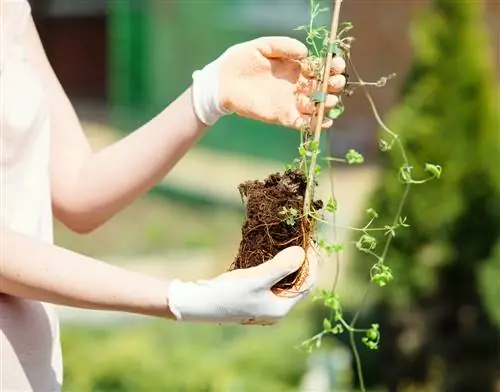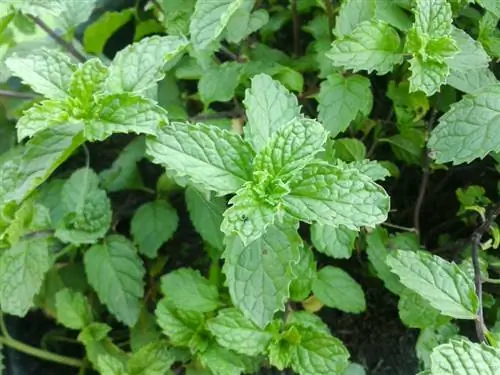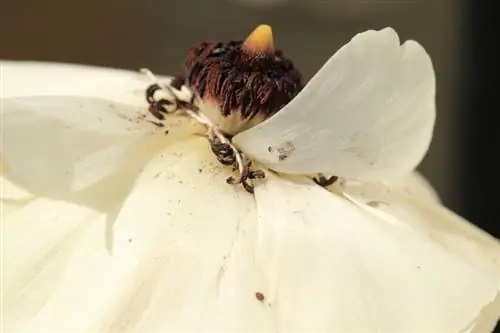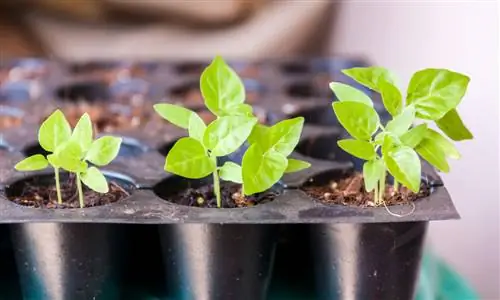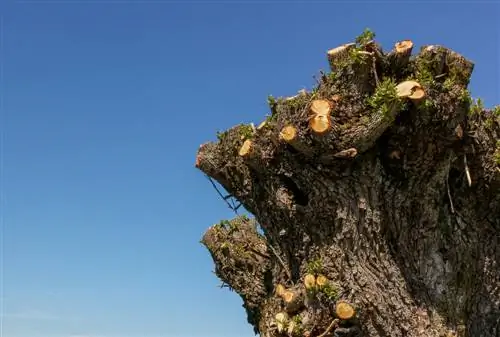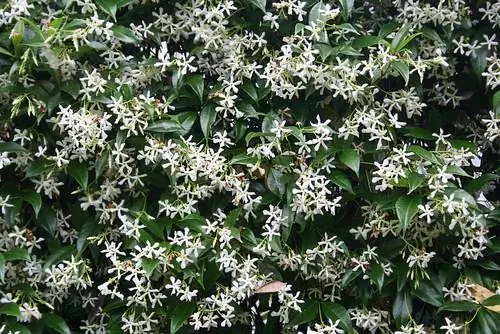- Author admin [email protected].
- Public 2023-12-16 16:46.
- Last modified 2025-01-23 11:20.
The clematis or clematis plants greenery on fences, walls and walls, and it can also be placed well in shady places in the garden. But how do you have to plant the clematis so that it thrives and develops many flowers?
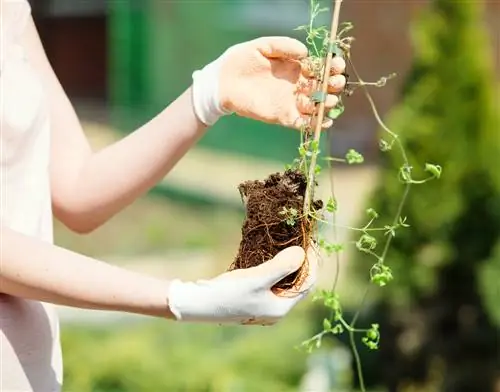
How do you plant a clematis correctly?
To plant a clematis correctly, choose a location with a shaded root area and a sunny head. Plant them in humus-rich, loose soil, add drainage layers and use a climbing aid for support.
When is the best time to plant clematis?
Clematis are usually offered as already rooted container plants and can therefore generally be planted all year round. However, the best planting time is late summer and early autumn. Between August and October, the soil temperature is usually optimal for the heat-sensitive roots of the forest plant, and it can also take root well before the first frost. This also means that the plant can put its energy into shoot growth and the formation of flower buds in the following year, so that abundant blooms are within reach.
Where should you plant a clematis?
It is best to plant clematis so that only the upper parts of the plant, from about half a meter high, are exposed to the sun. As forest plants, clematis love shaded feet and a sunny head. It shouldn't be too hot at the optimal location either. West-facing walls or walls are perfect, for example, and clematis can also be planted on taller trees or obelisks.
Low-growing perennials such as hostas, bluebells or purple bells are suitable for shading the root area. But be careful: these companion plants should not grow too dominantly, otherwise the roots of the different species will compete for water and nutrients. This can negatively affect the growth and flowering of the clematis.
Which soil do you use for clematis?
As typical forest dwellers, you should plant clematis in the same soil: humus-rich, loose and moist. Heavy, clayey soils require good drainage:
- Dig a hole twice as big and deep as necessary
- Mix excavated material with sand and compost
- fill in approx. ten centimeters of grit or sand as the bottom layer
This measure prevents the water from accumulating and the plant from becoming ill with clematis wilt. If possible, clematis in a pot should be given good compost-based potting soil (€9.00 on Amazon).
How do you plant a clematis correctly?
When planting the clematis, it is best to proceed as follows:
- Unpot clematis from container and immerse in bucket of water.
- Dig the planting hole: It should be deep enough that the surface of the ball is underground.
- Fill in a drainage layer of sand.
- Mix the excavated material with sand (if necessary) and compost.
- Insert clematis and fill in soil.
- Press the soil down well.
- Mulch the root area, e.g. B. with bark mulch.
Tip
Does the clematis need climbing aid?
As a climbing plant, a climbing aid is essential for clematis. If possible, choose a support made of wood or plastic, as metal frames can easily cause frostbite.

